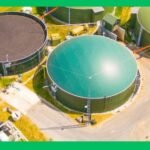India is predominantly an agrarian society where animal husbandry forms the backbone of national economy. The major aim of livestock farming is to production of food. Life first came into existence into sea; sea contains 72 elements. Animals, plants or human contain 72 trace elements. Food should contain natural elements. Under conventional production system, various agro-chemicals like drugs, hormone, synthetic feeds and antibiotics are widely used for improvement of livestock and poultry productivity. But, these synthetic products (hormone, antibiotic) are now increasingly held responsible for many health hazards, diseases outbreaks to living beings. With growing literacy, education, awareness coupled with rising incomes consumers are becoming more quality conscious for their food habits. Moreover, the food scares like food borne diseases are alerting people of harmful consequences of consuming food together with chemicals and harmful residues. The negative consequences of these agro-chemicals are not restricted to only physical health but also these are blamed for growing psychological/mental problems in society. Many chronic, emerging diseases which are on the rise are being attributed partly to these agro-chemicals, making the sustainability of chemical based farming and intensive livestock production questionable. Therefore, as an alternative, organic agriculture practice is rapidly growing around the world including in India.
The rate of growing Organic agriculture is around 20-25 percent globally. In India, only 0.03% of total area (25, 08,826 ha) area is under organic cultivation. In 2000-2001, there were approximately 41000ha of land certified as organic in India. In 2003-04, India produced 1, 15,238 tones of organic products among which 6,792 tons certified organic products like spices, fruits, cereals, tea, cotton, coffee, honey. This is going to increase further in future. Whereas, in 2003-04, India produced 88 million tones of milk, 40.4 billion eggs, 48.5 million kg wool, 6 million tones of meat, out of an enormous population of 485 million livestock and 489 million poultry. Despite such huge population and substantial production, there was not even a single organic livestock product exported. India has opportunity to tap the potential of organic livestock product market in a time span of 4-5 years
Organic livestock farming means rearing of livestock by usage of organic and biodegradable inputs from the ecosystem in terms of nutrition, health, housing and breeding of animals. It widely based on own fodder production instead usage of synthetic inputs e.g. feed additives, genetically modified organisms. The aim of organic farming is to establish and maintain balanced soil-plant-animal relationship also to create sustainable agro-ecological system based on local resources for functional integrity. Organic livestock management shall aim to utilize natural breeds and breeding methods, minimize stress, prevent disease, progressively eliminate the use of chemical allopathic veterinary drugs (including antibiotics), and maintain animal health and welfare. Livestock plays an important role in relation to the general principles of organic agriculture, supporting biological cycles within the farming system and diversifying production.
The overall basic standards of organic agriculture are described in the basic standards formulated by the International Federation of Organic Agriculture Movements (IFOAM) 2000. However, there are only 3 standards (out of 17) set by the IFOAM specifically refer to organic livestock farming. These are (i) Maintenance of biodiversity (ii) Provision of freedom and access to natural behaviour by livestock and (iii) Promotion of a balanced mix of crop and livestock production, leading to closed and sustainable nutrient cycles. Organic farming is based on closed agricultural systems and minimal use of non-renewable energy sources e.g. drugs, artificial fertilizers.
Basic requirements/setting up for organic livestock farm-
- Ideally located near to the market outlets for easy access to input support.
- A mild climate and free draining soil, with good access to shelter and water sources.
- A mix of grassland, cereal crops and a range of other arable crops including forages that provides pasture for grazing, conserved herbage, cereals to supply concentrated energy, straw for bedding, and feed sources from other arable crops. Arable forages in situ reduce disease pressure on the grassland from parasites such as stomach worms.
- A mix of livestock species in order to dilute the disease challenge to susceptible stock. Generally, the worm species which affect one livestock species don’t affect other species. At pasture, a mix of different classes i.e. of different age groups of any one species can be allowed to limit the worm burden in young stock.
- A self contained flock or herd – i.e. animals are to be born, reared and finished on the same farm so as to eliminate the stress in farm to farm transfer and also as a protection against entry of new disease organisms into the farm.
- Calving and lambing pens be arranged separately with more ventilated housing to minimize the risk from summer mastitis and also to meet the maternal nutrient requirement with the seasonal grass growth.
- Good nutrition to balance energy, protein and mineral supply as well as to ensure supply of fiber to ruminants for efficient rumen function
- Good livestock infrastructure like fencing, outdoor watering and feeding facilities, good handling facilities.
- Trained and experienced stockmen with good powers of observation, and also with the ability to take care for livestock with the minimum of stress in terms of grouping, feeding, and handling.
Conversion period
It is the time between the start of organic management and certification of crops or animal husbandry is known as the conversion period. Animal products may be sold as “product of organic agriculture” only after the farm or relevant part of it has been under conversion for at least one year and in case of dairy and egg production, this period shall not be less than 30 days. Animals present on the farm at the time of conversion may be sold for organic meat if the organic standards have been followed for one year.
Author: Dr. Monuj Kr. Doley, Subject Matter Specialist (Animal Science), Krishi Vigyan Kendra, Karbi Anglong & Dr. Neethi Baruah, Jr. Scientist, RARS, Diphu, Assam Agricultural University / Contact No. 8638251626



